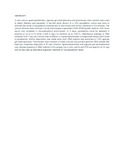| dc.contributor.author | Karanja, DN | |
| dc.contributor.author | Yeboah, RK | |
| dc.contributor.author | Yokoyama, N | |
| dc.contributor.author | Igarashi, I | |
| dc.date.accessioned | 2014-04-23T12:31:23Z | |
| dc.date.available | 2014-04-23T12:31:23Z | |
| dc.date.issued | 2005 | |
| dc.identifier.citation | JournalThe Kenya Veterinarian 2005 Vol. 29 pp. 25-28 | en_US |
| dc.identifier.issn | 0256-5161 | |
| dc.identifier.uri | http://www.cabdirect.org/abstracts/20123023733.html?resultNumber=10&start=10&q=KARANJA+D | |
| dc.identifier.uri | http://hdl.handle.net/11295/65948 | |
| dc.description.abstract | In vitro culture, spectrophotometry, agarose gel electrophoresis and polymerase chain reaction were used to detect Babesia equi parasites. A ten-fold serial dilution of a 10% parasitemic culture was done to simulate low levels of parasitemia characteristic of sub-clinical and chronic infections in live animals. The various dilutions were cultured in horse erythrocytes suspended in 60% M199 growth medium, 40% horse serum and incubated in microaerophilus environment. In 3 days, parasitemia could be detected in dilutions of up to 0.1% while it took 5 days for dilutions up to 0.001%. Absorbance readings of DNA extracted from 7 day old cultures read at 260nm in a spectrophotometer corresponded directly with levels of parasitemia. Similar observation was made when such DNA material was examined in 1.5% agarose gel electrophoresis. Polymerase chain reaction of these cultures and purified genomic DNA yielded 260 base pair fragments diagnostic of B. equi infection. Spectrophotometry and agarose gel electrophoresis only indicate presence of DNA material in the sample, but in vitro culture and PCR are specific for B. equi and can be used as alternative diagnostic methods for low parasitemic levels | en_US |
| dc.language.iso | en | en_US |
| dc.publisher | University of Nairobi, | en_US |
| dc.title | Alternative methods in laboratory diagnosis of equine piroplasmosis. | en_US |
| dc.type | Article | en_US |

